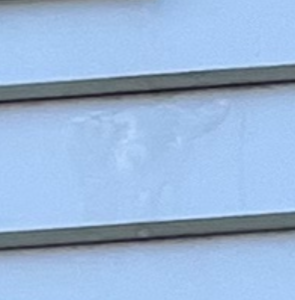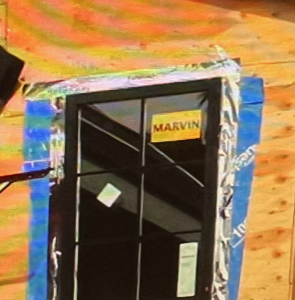Hello. My recessed windows in my house look like this outside. Our siding is cedar painted clapboard. Is this a flashing issue and what is the fix for this? Here is a photo of our window flashing during construction however this is a NON recessed window so not sure its the same.. thank you for the help. House is 1 year old. in climate 4A. So far I am not seeing visible moisture from inside.
Discussion Forum
Discussion Forum
Up Next
Video Shorts
Featured Story

Listeners write in about fostering trade work and proposed changes to Canadian code and ask questions about roof and wall insulation for an old house.
Featured Video
How to Install Exterior Window TrimHighlights
"I have learned so much thanks to the searchable articles on the FHB website. I can confidently say that I expect to be a life-long subscriber." - M.K.
Fine Homebuilding Magazine
- Home Group
- Antique Trader
- Arts & Crafts Homes
- Bank Note Reporter
- Cabin Life
- Cuisine at Home
- Fine Gardening
- Fine Woodworking
- Green Building Advisor
- Garden Gate
- Horticulture
- Keep Craft Alive
- Log Home Living
- Military Trader/Vehicles
- Numismatic News
- Numismaster
- Old Cars Weekly
- Old House Journal
- Period Homes
- Popular Woodworking
- Script
- ShopNotes
- Sports Collectors Digest
- Threads
- Timber Home Living
- Traditional Building
- Woodsmith
- World Coin News
- Writer's Digest





















Replies
Based on the pictures and no sign of moisture on the inside, I would guess that the sill is leaking at the window and water is getting behind the sill and making it's way out to the siding below. If that is the case, a bead of silicone caulking at where the sill meets the window will probably solve this. Hope this helps!
Phil - Elk Ridge Custom Homes
elkridgecustomhomes.com
Thanks so much. Does the flashing look correct in the pic of flashing I showed?
I’m going to moisture test the wall tomorrow. If it’s wet inside what is the fix for it? The window is like 3 inches recessed into the wall. Thank you!!
Some better pictures would help. The flashing pic shows sloppy work even if the laps are proper. Additionally, how the house wrap was integrated would be important.
The bottom right sill in the picture almost appears notched around the siding, a good entry point for water if that is the case. Also, there should be slope on a sill.
“Caulk and paint make for what a carpenter ain’t” is a sometimes used remark.
But caulk does have its place. Not all caulk is right for exterior work. I’d never use Silicone caulk on a lot of things, yours being one. I prefer and have had good luck with urethane caulk. Lasts, doesn’t shrink, and has some stretch and ,flexibility.
Finding entry points of water intrusion is not easy. Think like the water, start low and work your way up. Water usually goes downhill, whether straight down or on a slope horizontally. Can wick up. You do not want to caulk the exit point as it will keep the part behind wet and rot over time.
Find the entry points.
Thanks so much.
Here is what it looks like from the room. It’s def slopped. Do you think this corner is an entry point? Here is this window during construction to see the WRB. Looks the the wrap doesn’t go in on the top.
I’m sorry, I would need to have been there up on a ladder before siding to see how they detailed the opening and now to see it close up, all around etc.
Thank you for the added pics, hopefully others have a better idea upon seeing them.
After everything is covered up it gets harder to find an entry point. Where it exits or enters the dwelling is usually below but often to the side or to the interior.
The detailing of the house wrap with the flashing tape is hard to figure out. We often see a quick slap it up their muddle of tape and wrap. The detail is the important part and how one interacts with the other.
It looks damp and slightly discolored in the corner of your last picture. The best I can do.
After 50 yrs in the trade I am now at the point of a new motto…
“First floor, 10 from the door”
“And I won’t change the door”